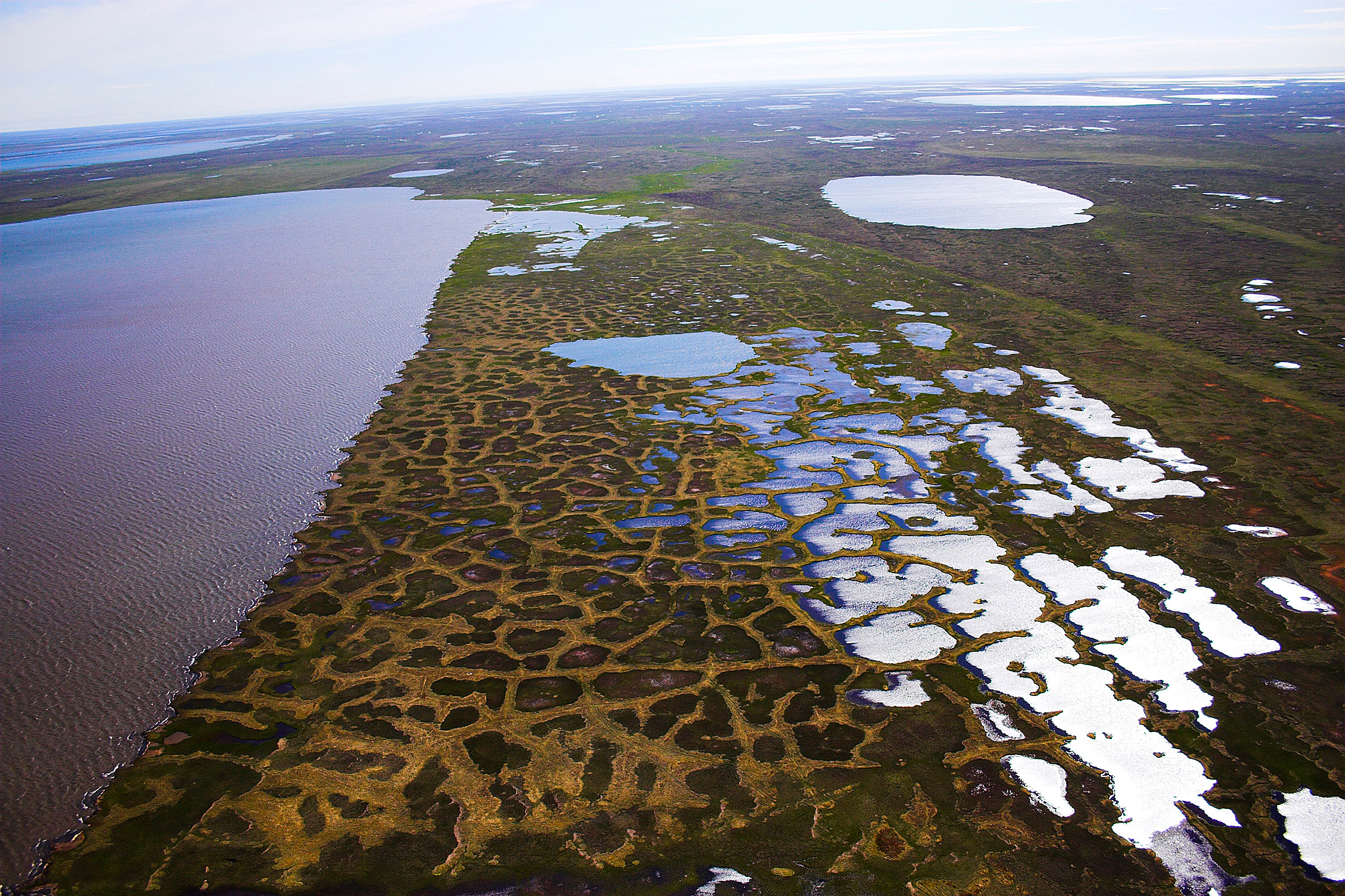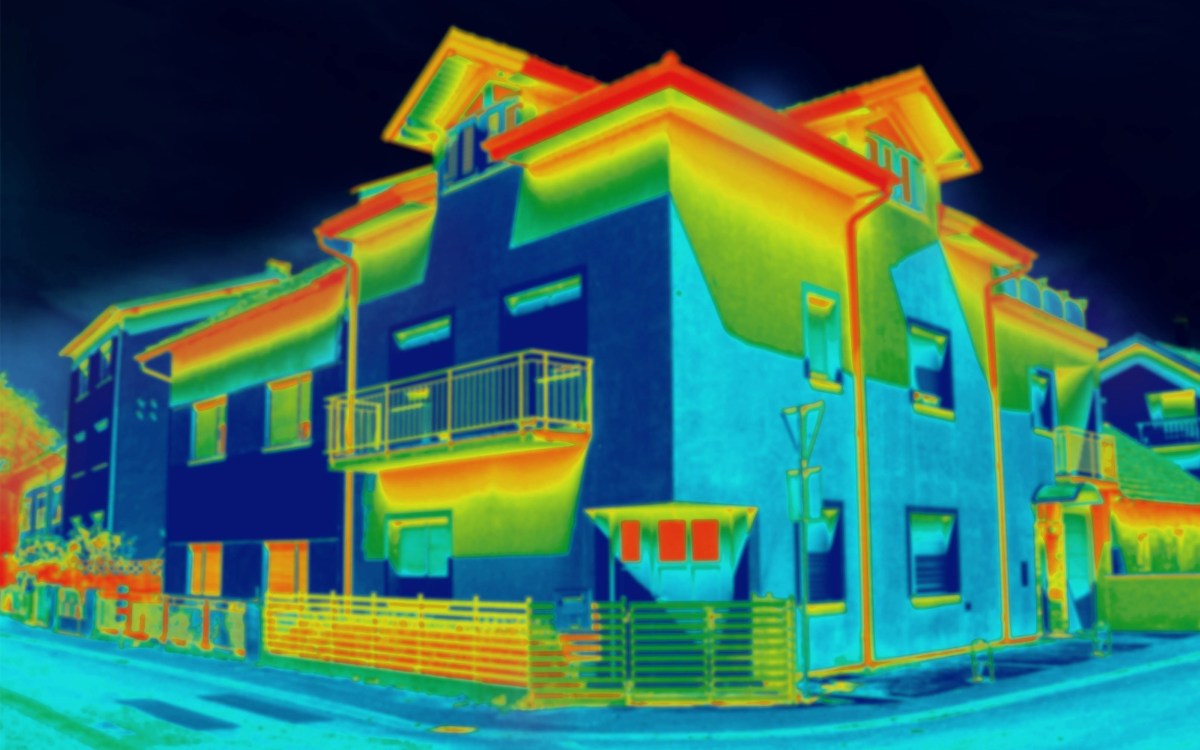
A recent study shows that nitrous-oxide emissions from thawing Alaskan permafrost are about 12 times higher than previously assumed.
iStock
No laughing matter
The warming Arctic permafrost may be releasing more nitrous oxide, a potent greenhouse gas, than previously thought
About a quarter of the Northern Hemisphere is covered in permafrost. Now, it turns out these permanently frozen beds of soil, rock, and sediment are actually not so permanent: They’re thawing at an increasing rate.
Human-induced climate change is warming these lands, melting the ice and loosening the soil, and that can cause severe damage. Forests are falling; roads are collapsing; and, in an ironic twist, the warmer soil is releasing even more greenhouse gases, which could further exacerbate the effects of climate change.
Shortly after scientists first noticed signs of thaw in the early 1970s, they rushed to monitor emissions of the two most influential greenhouse gases — carbon dioxide and methane. But until recently, the threat of the third-most-prevalent gas, nitrous oxide (N2O) — known in dentistry as laughing gas — has largely been ignored.
In a 2010 paper, the Environmental Protection Agency (EPA) rated permafrost nitrous oxide emissions as “negligible,” and few studies counter this claim.
But a paper published this month in the journal Atmospheric Chemistry and Physics shows that nitrous oxide emissions from thawing Alaskan permafrost are about 12 times higher than previously assumed. Since N2O traps heat nearly 300 times more efficiently than carbon dioxide does, this revelation could mean that the Arctic — and the global climate — are in more danger than we thought. “Much smaller increases in nitrous oxide would entail the same kind of climate change that a large plume of CO2would cause,” said Wilkerson, the paper’s first author and a Ph.D. student at the Graduate School of Arts and Sciences based in the lab of James G. Anderson, the Philip S. Weld Professor of Atmospheric Chemistry at Harvard.
In August 2013, before Wilkerson joined the Anderson lab, members of the lab and scientists from the National Oceanic and Atmospheric Administration (NOAA) traveled to the North Slope region of Alaska, bringing with them a specially outfitted small plane that collected data on four greenhouse gases — carbon dioxide, methane, water vapor, and nitrous oxide — that are naturally released from soil and water as part of microbial processes. Flying low, the airborne laboratory collected the gases over nearly 200 square miles, an area about four times the size of Boston proper. Using the eddy covariance technique, which measures vertical wind speed and the concentration of trace gases in the atmosphere, the team could determine whether more gases rose or fell.
In this case, what goes up does not always come down: Greenhouse gases rise into the atmosphere, where they trap heat and warm the planet. And nitrous oxide poses an even greater threat: In the stratosphere, sunlight and oxygen team up to convert the gas into reactive nitrogen oxides that eat away at the ozone layer, which absorbs most of the sun’s harmful ultraviolet radiation. According to the EPA, atmospheric levels of the gas are rising overall, and the molecules can stay in the atmosphere for up to 114 years.
When Wilkerson joined Anderson’s lab in 2013, the nitrous oxide data were still raw. He asked if he could analyze the numbers. “It wasn’t expected to be interesting or take very long,” Wilkerson said. “I viewed it as a mini-project. I said let’s use this data we have, because frankly collecting it had been very expensive. I thought I might as well do this, and I can get more eddy covariance experience at the same time.”
Sure, Anderson said, go right ahead. Both men figured the data would confirm what everyone already seemed to know: Nitrous oxide from permafrost is not a credible threat.
“It was 10 million times larger than any previous study looking at permafrost N2O emissions. It makes [previous] findings quite a bit more serious.”
Jordan Wilkerson
“The assumption is that these permafrost soils are so cold there wouldn’t be much microbial activity,” Wilkerson said. “Until 2009 there was no indication by any study whatsoever that emissions could actually be quite large in permafrost regions.”
Limited research had been done using core samples, which are warmed in the controlled environment of a laboratory to see how much gas the sampled peat releases, or 15 or 20 enclosed cylinders about 18 inches in diameter and several inches deep that sample a square meter or so of the gases released from the soil in which they’re embedded. Those studies suggested N2O might be higher than previously suspected but, said Wilkerson, “they didn’t gain much traction because they were looking at such small areas. It was easy to dismiss them as not being representative of permafrost as a whole.”
The Anderson data covered far more ground than any previous study, and when Wilkerson ran the calculations he found that high emissions were relatively widespread.
In just one month, the plane had recorded enough nitrous oxide to fulfill the expected cap for an entire year. Though the Anderson data represented just 193 of the 5.5 million square miles of the Arctic — like using a Rhode Island–sized plot to represent the entire United States — “it was 10 million times larger than any previous study looking at permafrost N2O emissions,” said Wilkerson. “It makes [previous] findings quite a bit more serious.”
Wilkerson hopes this new analysis will inspire further research. “We don’t know how much more it’s going to increase,” he said, “and we didn’t know it was significant at all because the other studies were on such a small spatial scale that we didn’t know whether they were representative of the larger region.”
Eddy covariance towers across the Arctic use the same technology the Anderson team used in their plane to monitor carbon dioxide and methane. But “not a single one of those towers in a permafrost region measures N2O,” said Wilkinson. “It can be done, because there was a proof-of-concept tower set up temporarily in 2006 near a dairy farm in the Netherlands.” With chambers, scientists have to physically go and collect gas samples every hour, but if the towers were set up to collect N2O, numbers over a large area would be much more robust.
In December NOAA reported that the Arctic is warming almost twice as fast as the rest of the planet, and the permafrost, too, is predicted to thaw at an ever-increasing rate. The warm temperatures could also bring more vegetation to the region, which could help decrease future nitrous-oxide levels, since plants absorb nitrogen. But to understand how plants might mitigate the risk, researchers need more data on the risk itself.
Wilkerson hopes researchers hurry up and collect this data, whether by plane, tower, chamber, or core. Or better yet, all four. “This needs to be taken more seriously than it is right now,” he said. Because as the planet warms, permafrost could continue to melt — which would contribute to warming the planet, which would melt more frost. To figure out how to slow this cycle, we first need to know just how bad the situation is.
This research is funded by the National Science Foundation.







